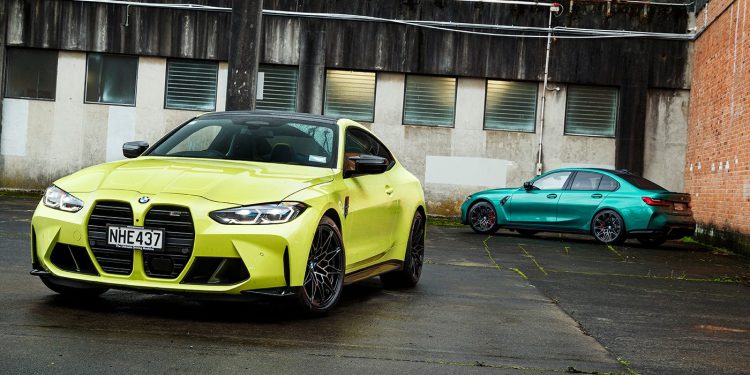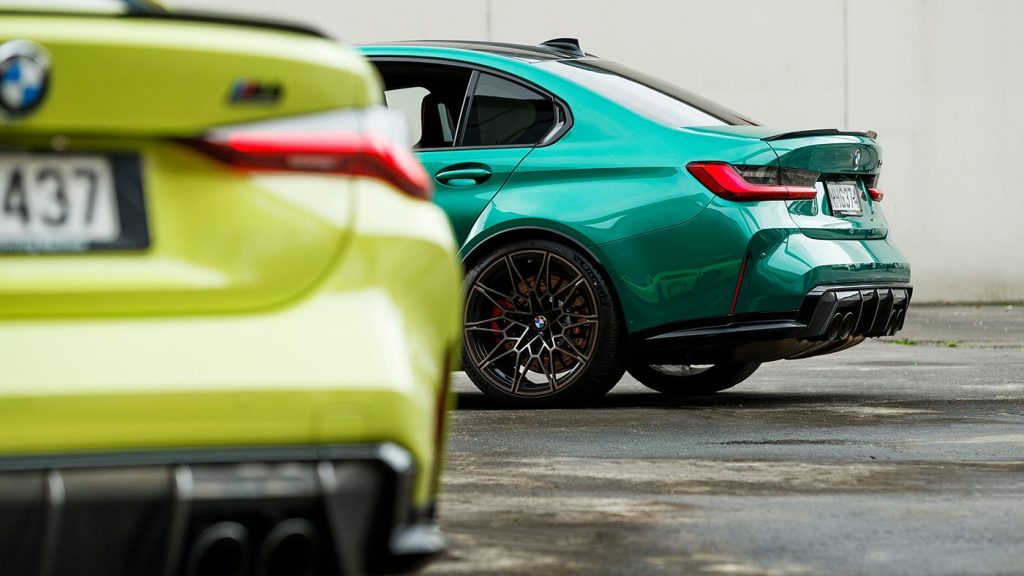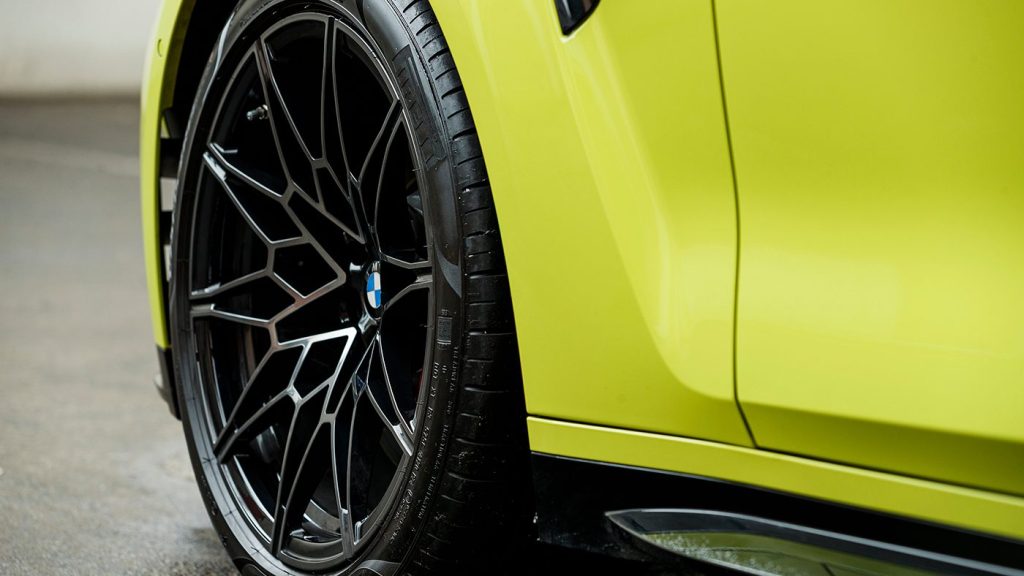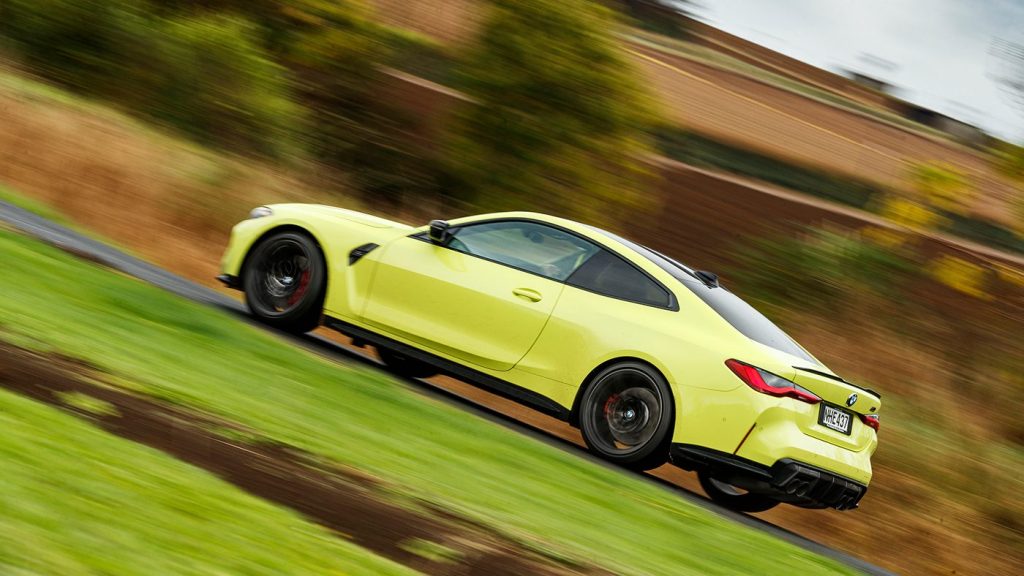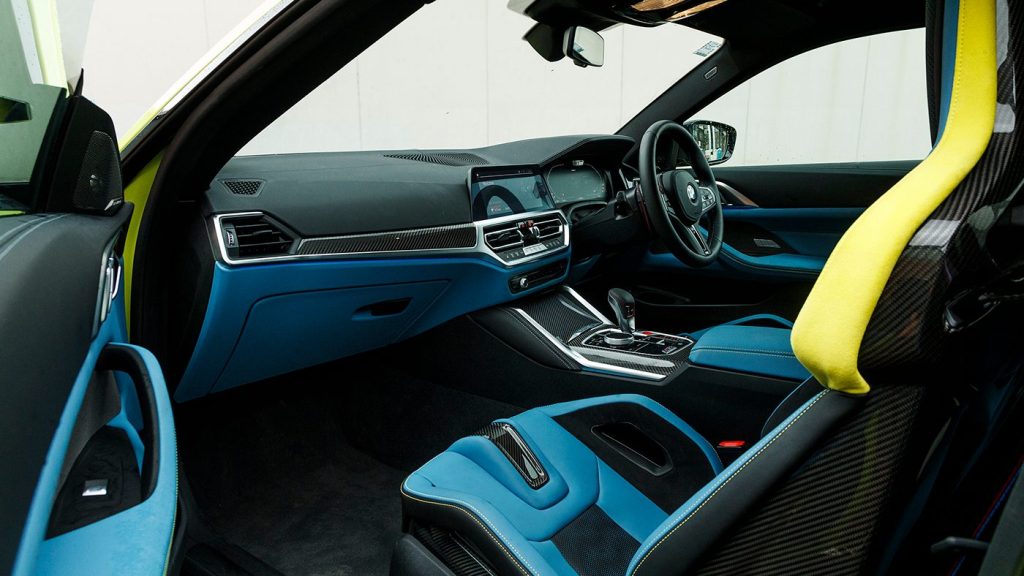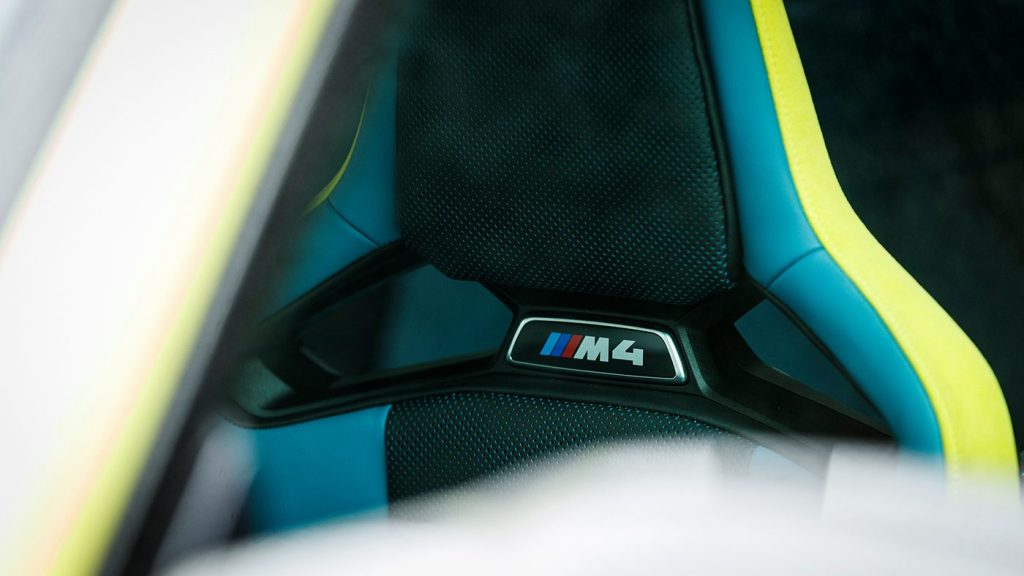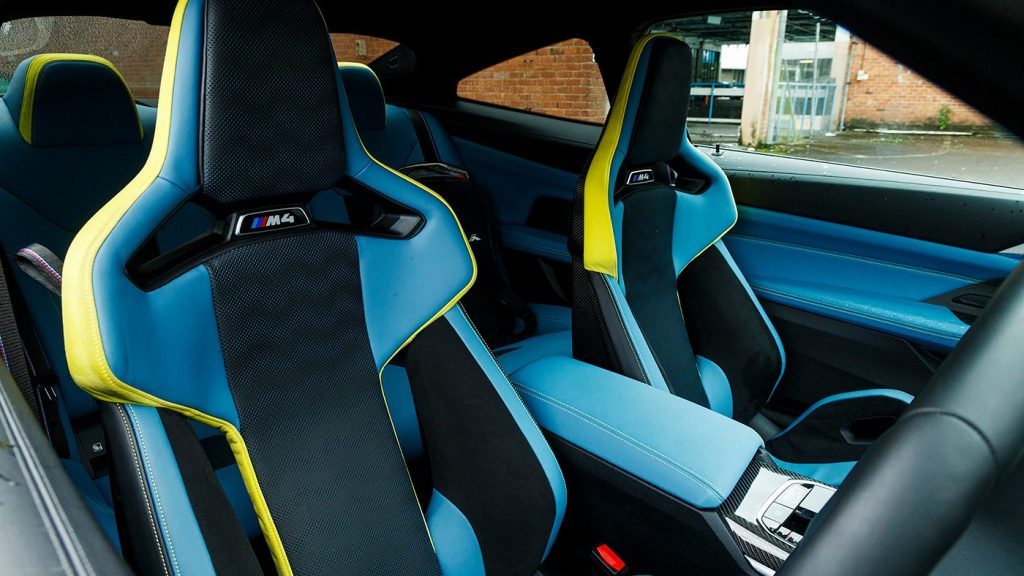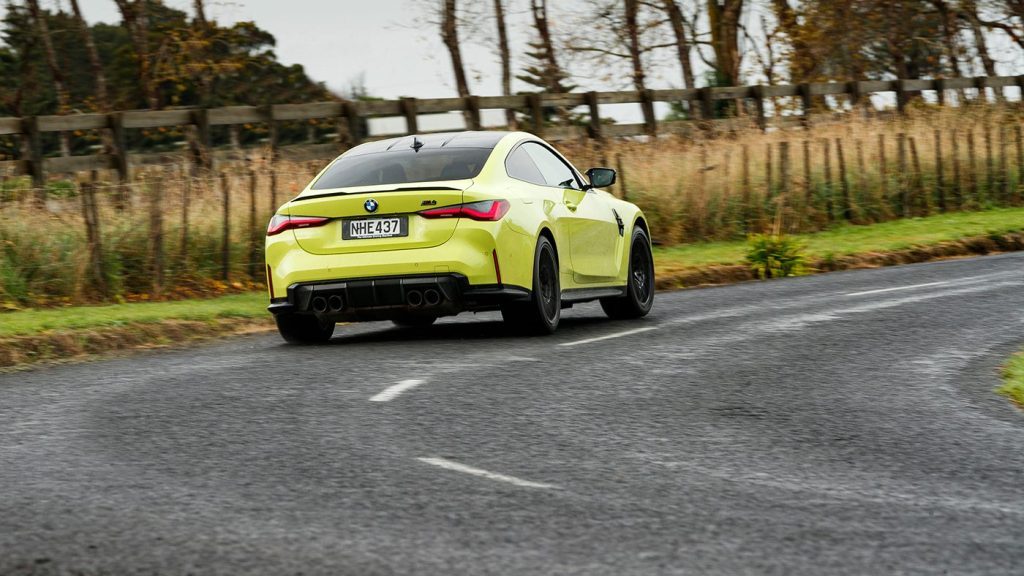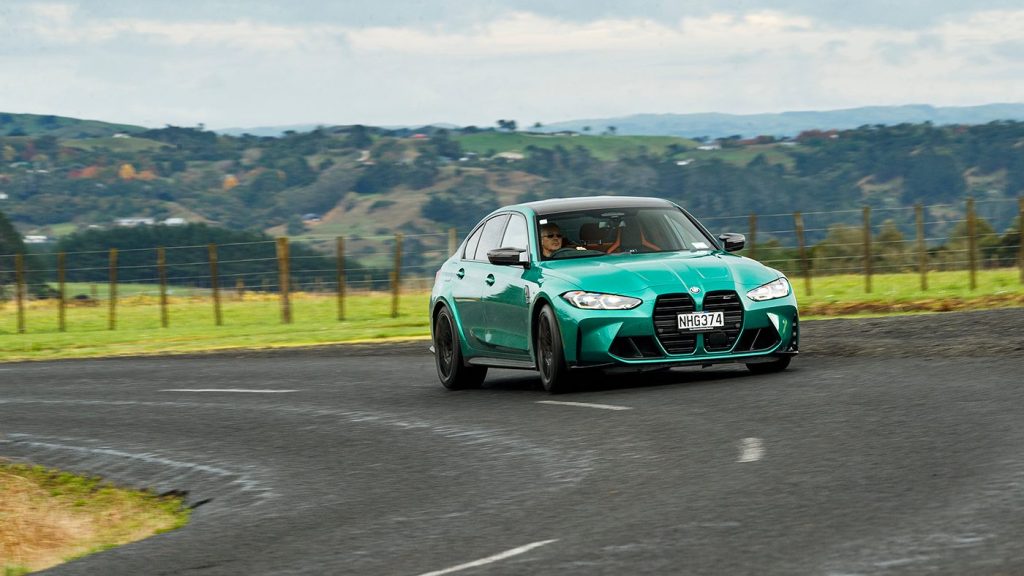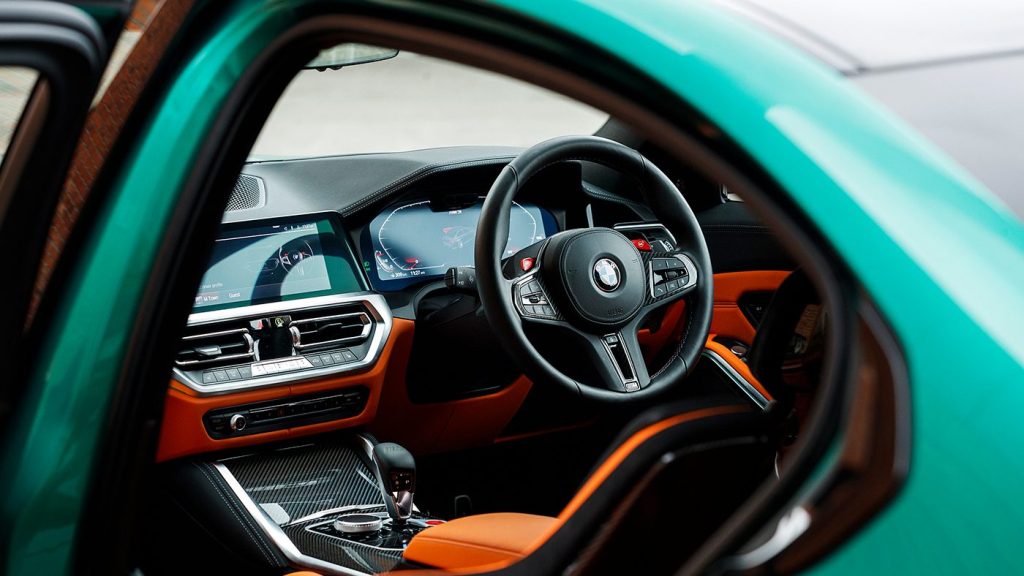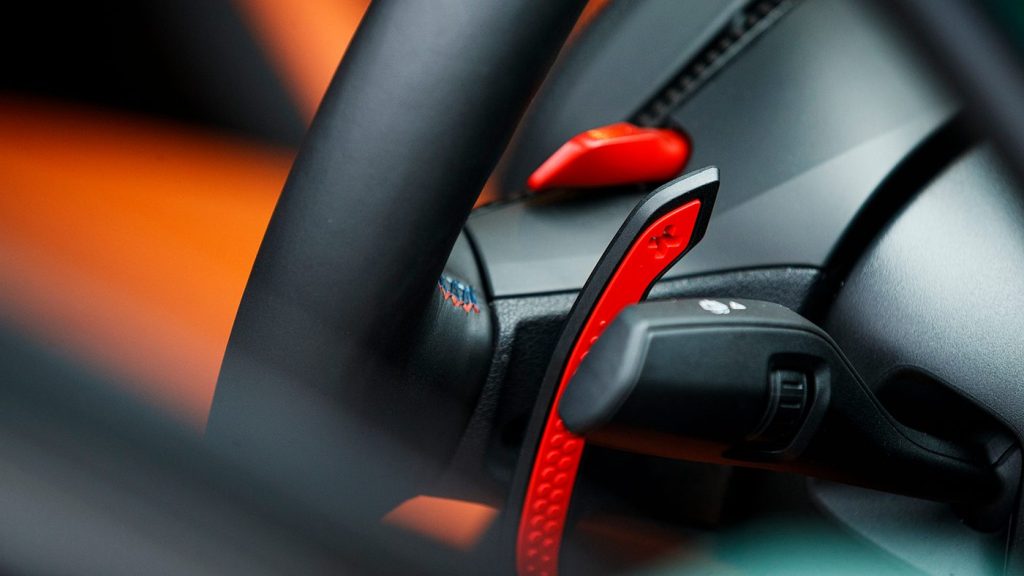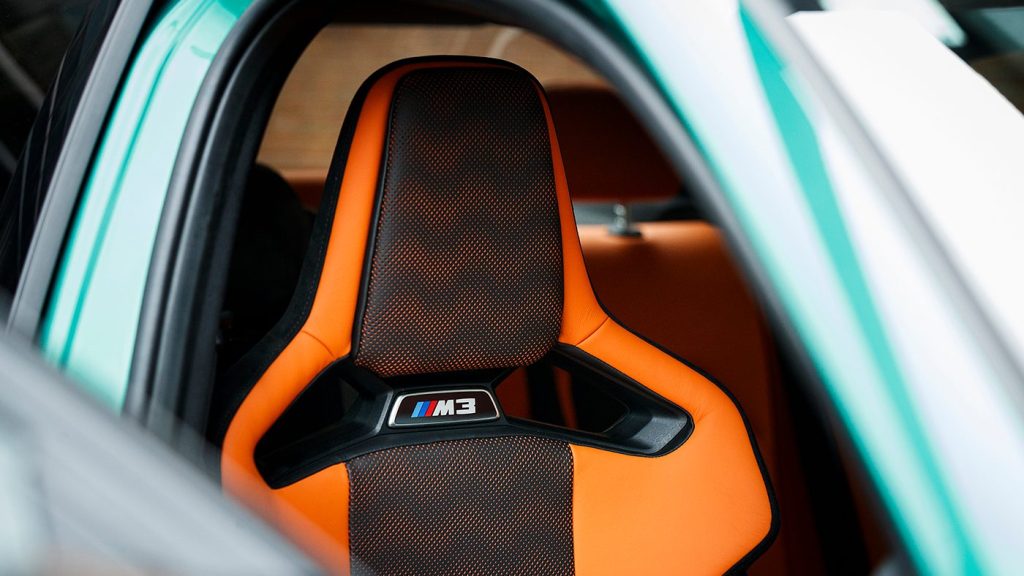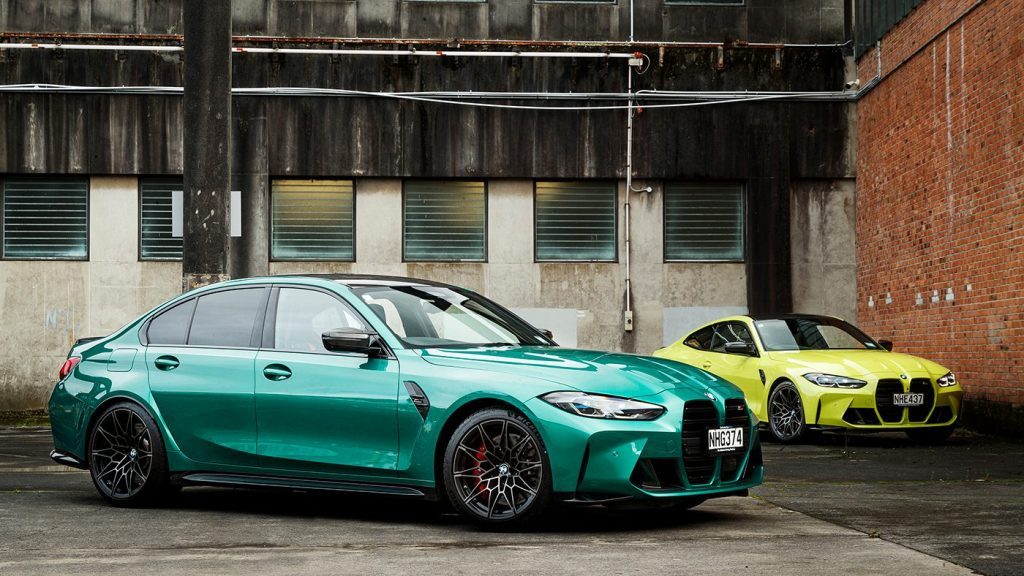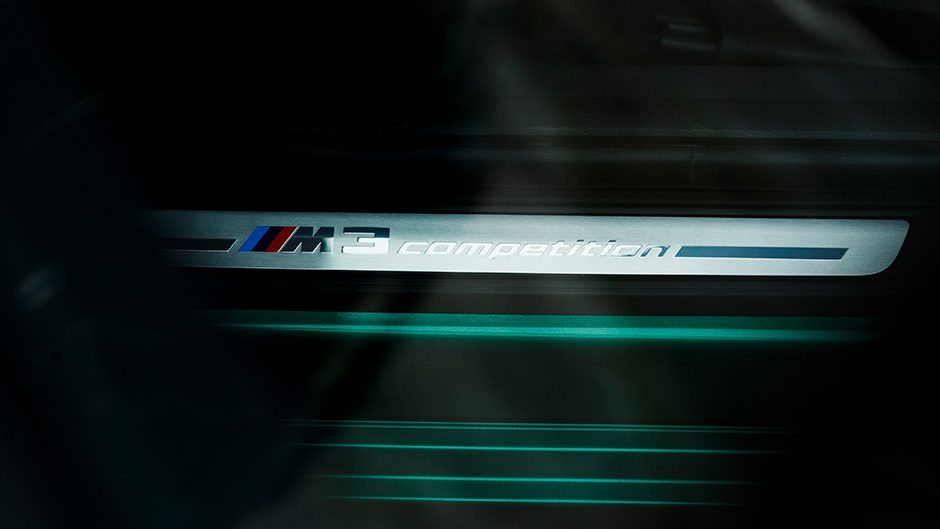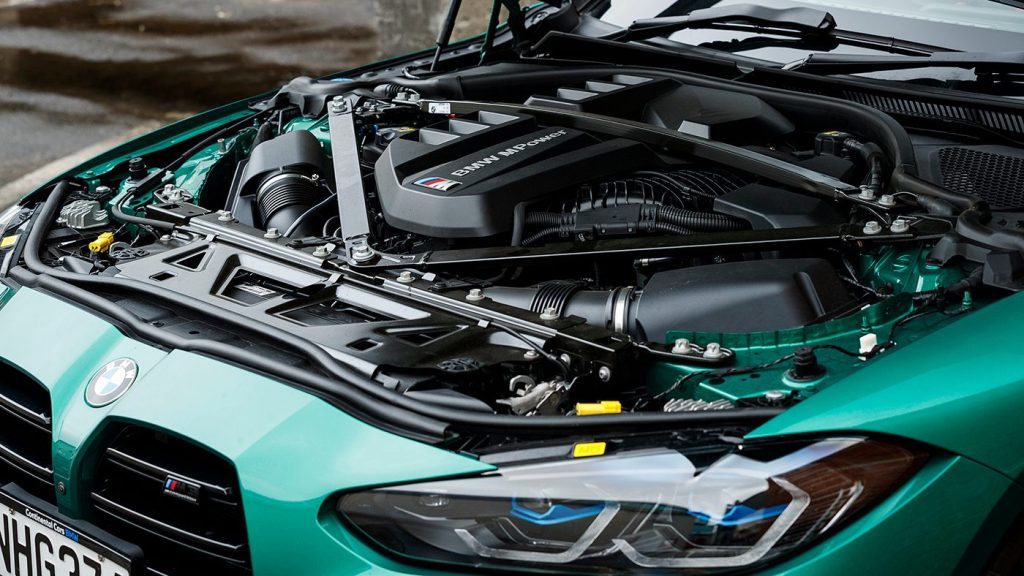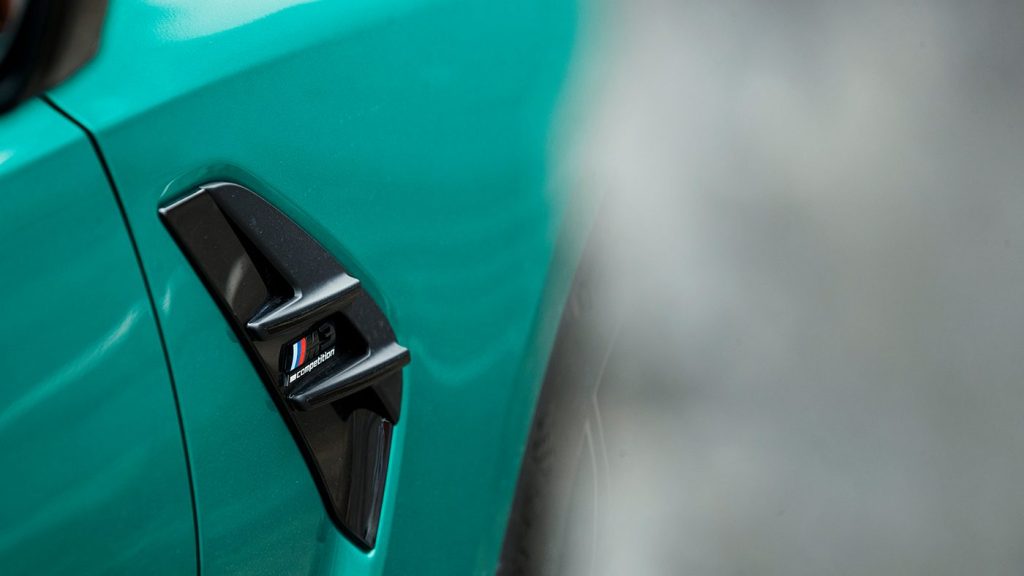2021 BMW M3 Competition vs BMW M4 Competition comparison
Words Peter Louisson | Photos Tom Gasnier
They have the same powertrain DNA but different bodies. Are the M3 and M4 otherwise identical? We drive both to find out.
After two thrilling introductions to BMW’s new G-20 M3 and M4 models, it was on-road time with this M-power pair, to check out how they fare in everyday use. We were somewhat nervous about driving these in mixed autumnal conditions frankly but we needn’t have been; they’re surprisingly sticky providing you don’t go all silly when it’s greasy. The PZero and Michelin PilotSport 4 rubber beneath do sterling work, as does the 10-step TC system.
The option to go all-paw is coming later in the year but in the meantime we’d suggest it probably isn’t worth it, given how well these scoot off the line in the dry, and how they hang fast in the wet. Those wanting the ultimate in security will pay the price with extra weight and they’re already the better part of 1750kg.
At the first sign of a dry road we were keen to attach the GPS timing device and determine, after mastering Launch Control, whether the pair were capable of 3.9sec zero to 100 times; something with a three would be a first for these. The previous iterations were rated at 4.1sec. They had 315kW and 550Nm. Nowadays, they develop 375kW and 650Nm in Competition guise, so you’d expect added haste. At our first attempt in the M4, the surface was dry but temperatures cool so we left disappointed with a 4.1sec best run.
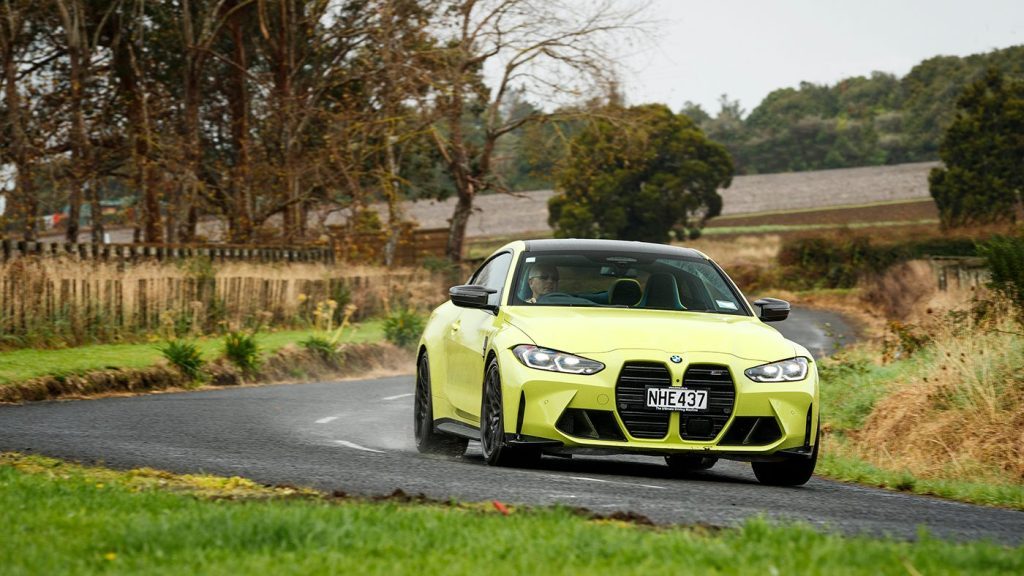
However, two days later in brighter conditions, the M4 blazed to a pair of 3.72s, aided by a gentle tail wind. Later in the day, when it was dead calm, the M3 matched BMW’s claim of 3.9sec, on regular seal.
In previous rear-drive M cars the engineers made launch control all but impossible to activate for fear of transmission damage. Now it’s much easier to initiate, only you have to wait with the car stopped up on the brake as the system engages before letting rip. However, as before, it’s a one-shot affair and then you must give the car a brief warm-down period.
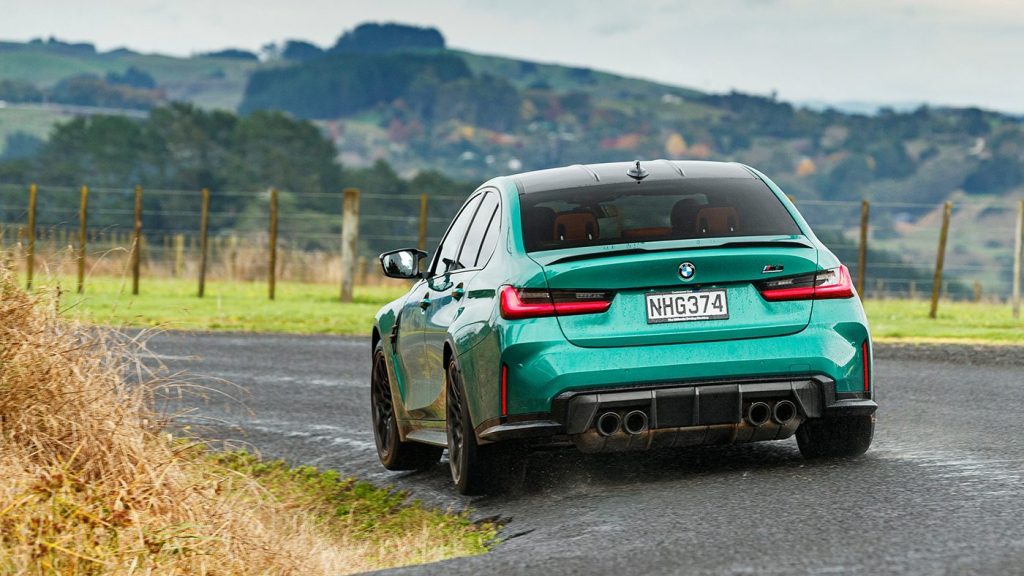
Just how quick exactly?
These are fast machines, no question; the M3 has seen off competition like the new A 45 and Giulia Quadrifoglio in Sutcliffe’s hands on track in the UK, and here’s why – it is outlandishly quick on the run. We were shocked to see the 80-120 click off at under 2.0sec, with a best of 1.89sec for the M4, and the M3 followed that up with a 1.86sec run! They require just 50m for an overtake. By comparison, the M5 Comp needs 2.23sec. It takes an M8 Competition to outrun the pair, and even then by just 0.1sec (1.76sec).
Any TED time under two seconds is normally the preserve of all-paw supercars or top-end 911s.
And atop all that, the M3 and M4 twins don’t even use a seven-speed twin-clutch transmission; they’re now running with an eight-speed ZF torque converter gearbox as this is just as fast shifting and offers more refined off-the-mark performance. You can set it to change quicker with higher gearlogic settings. Or just let it loaf in the bottom one and use the low-end pull of the bi-turbo mill.
Of all the M vehicles, these seem about the optimum size and weight, confirmed by the TED time, and it has always been thus.
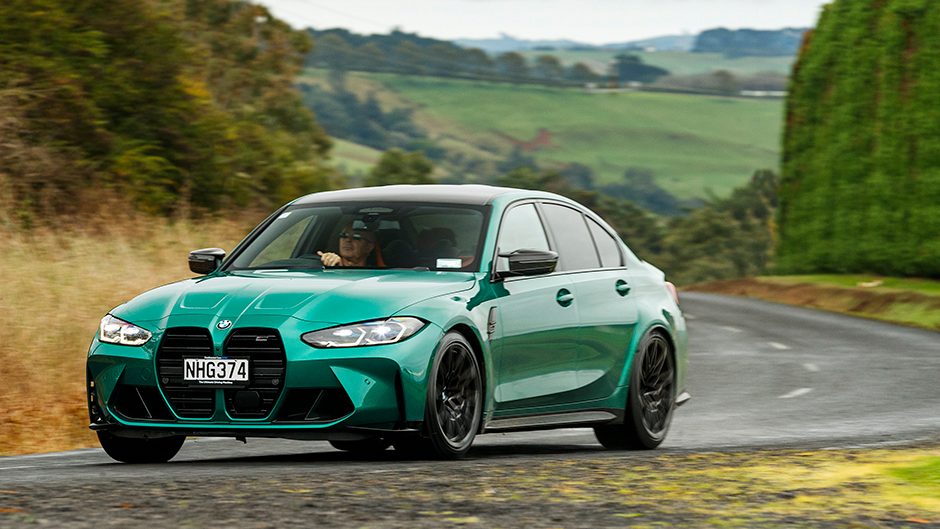
Beware carbon overkill
Our pair had been set up for track action, so each was wearing the $9500 optional carbon bucket seats kitted out in dual-tone leather and with shiny carbon backs. By all means opt for these seats if you’re planning on doing lots of lateral G work on track. We know they’d both been doing so because we checked the drift analyser and found the best effort had 23 degrees of angular momentum and the car rated the driver with a five-star effort. Small wonder then that both machines had average fuel use figures at pick up in the mid 20s. They fell steadily thereafter.
Anyhow, we’d probably not bother with these seats. While they’re powered and have adjustable bolster support, there’s nothing in the way of lumbar variability and it felt underdone, as did squab cushioning. If you like to sit near the wheel, entry is particularly tricky with the exaggerated bolsters, especially if you have front-row forward thighs.
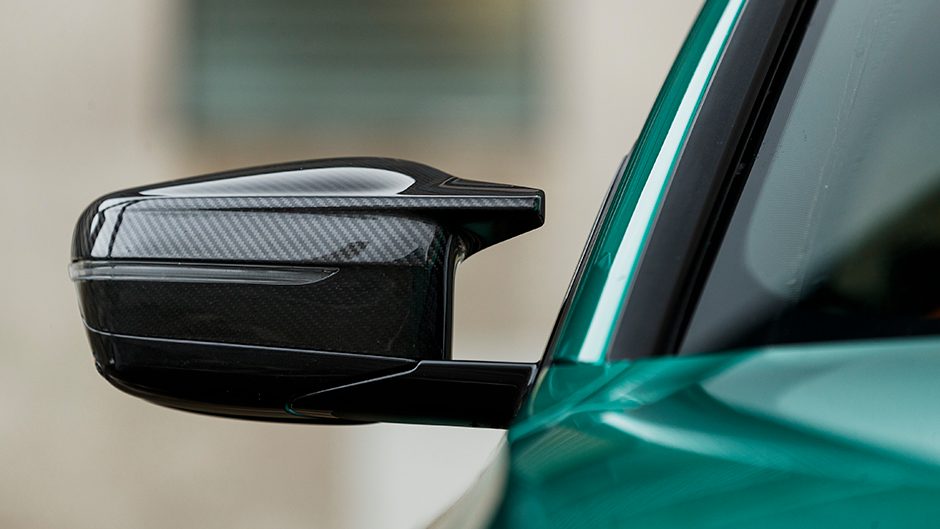
Is the styling improved?
No-one much seemed to like the new grille. It’s not that it looks bad per se; it’s just that it looks stupid with a number plate attached to the upright between the two halves of the grille. You’d think the designers would have considered this but clearly not as there’s no other place to hang the thing.
There are plenty of great cues though, like muscular haunches, bonnet bulges, the nice CF finishing touches, big asymmetric 19- and 20-inch wheels, high-tech laser headlights and the aero styled mirrors with carbon cap finishings. We reckon you can see rather too much of the quad-outlet sports muffler gubbins when following either car.
The inside is brill, carbon seats aside. Their stubby and initially perplexing gearlevers make more sense the more you become accustomed to them. Push left and forward to select reverse, across to the right for drive, and another right push for manual sequential mode, with a pull back for an upshift. Course, you can always default to the paddles (in carbon, naturally) but that’s just not necessary on road. During the back and forth photography sessions, you realise how sensible the shift system is, working like a charm for quick swaps between R and D.
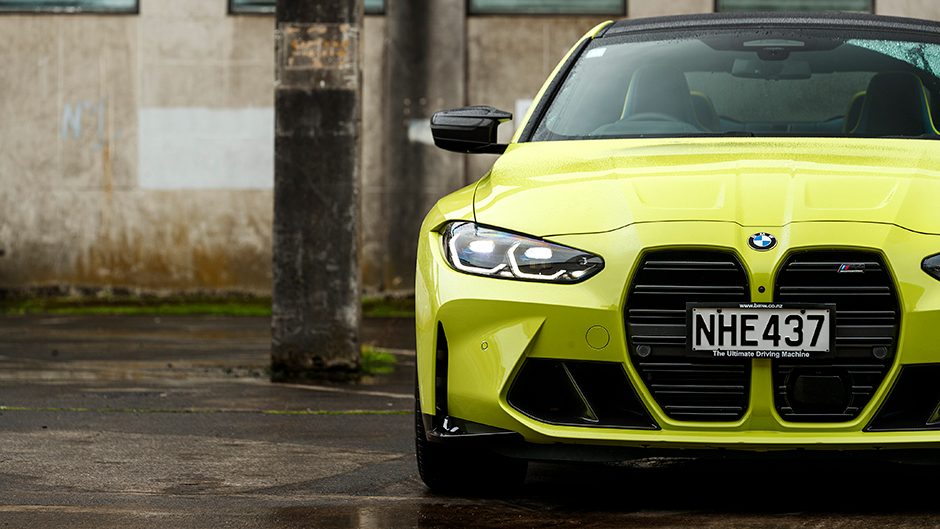
Day to day
Once ensconced, the pair work as everyday cars in town reasonably well, easing along at under 2000rpm before upshifting. On the motorway, just slot into active cruise and let the autonomous bits guide you to work. Only not in the wet; the radar sensor is pernickety about crap on the lens. In heavy rain it just drops out, but if it deactivates in the dry chances are a quick spray and wipe will see you right. The system is functionally great when it’s working.
There’s such a lot of set-up bits and bobs to play with that it might surprise you to know that both of these work well on our roads in their default settings, one better than the other. You don’t need to fiddle any for perfectly acceptable progress (Comfort for engine, suspension, steering, brakes) and even for shift speed, where the base level – the first of three – is just fine.
About the only setting that feels even better than Comfort is the Sport setting for the brakes where they just have a magic amount of slowing power with modest input pressure. But the reality is, they are both stunning on the Comfort brake setting as well, full of power and sensitivity. Numerically they both stopped from highway speeds in 32m and change. We wonder how much better the optional carbon brakes could be!
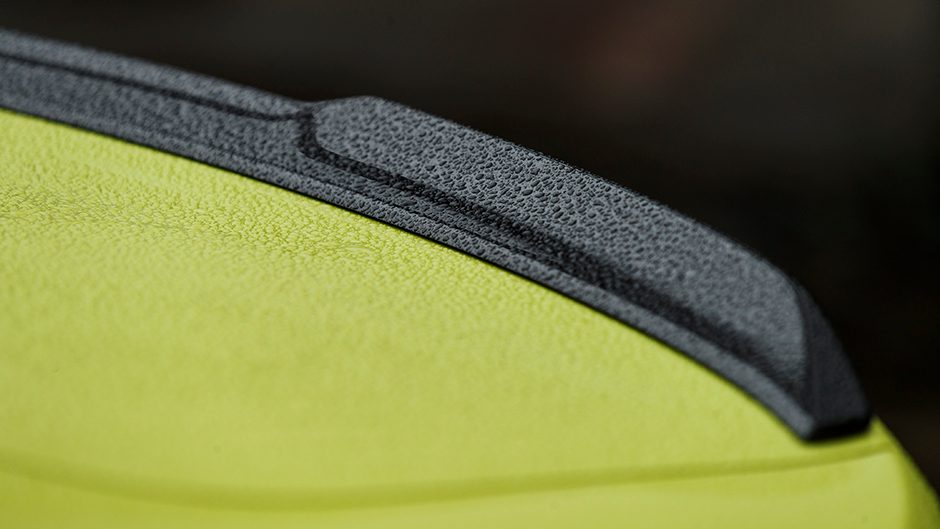
Another surprise with the pair was just how quiet they are on the go. Over the worst seal surfaces we recorded the odd SPL over 75dB but for the most part tyre noise is subdued. You’d expect that to be especially true for the M3 which featured optional double glazing but we couldn’t measure any significant difference.
Other than features already mentioned, the M3/4 come with an adaptive M differential, three-zone air, clear-as head-up display with traffic sign recognition, an H-K surround sound system, parking assistance, powered boot lids and wireless charging. There’s also BMW Connected drive features, and a 12.3 inch touchscreen aided by iDrive. M3 costs $168,900 and the M4 adds $4k.
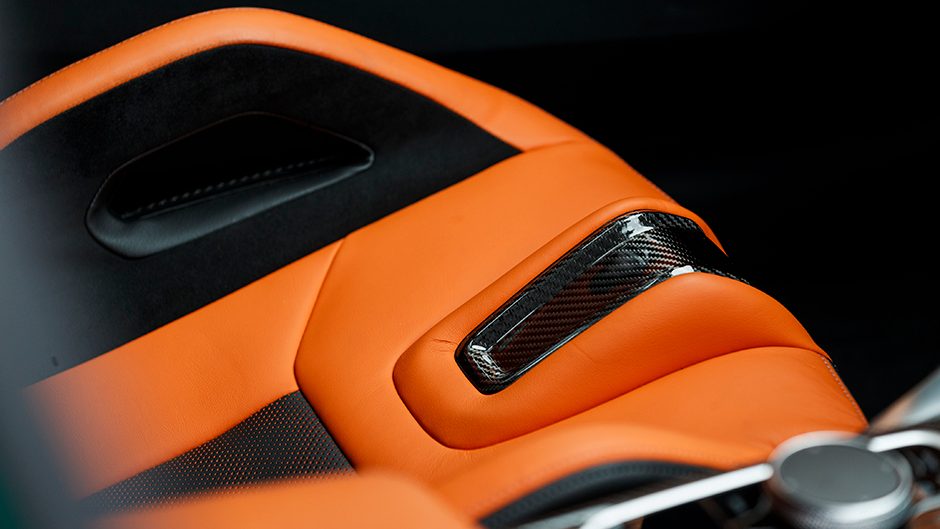
Major differences then?
Historically, BMW sets up the coupe version to be more dynamic. On track in Sport+ this isn’t apparent but on road settings it is. In the M4 in Comfort mode, there’s a degree of jiggle at urban speeds, only easing once you reach the outskirts of town and the pace rises. Jump into the M3 and it’s a different story, with a pleasant mix of pliancy and control in the Comfort setting, and also in Sport. This makes the saloon comfortably the better day-to-day car, given it’s easier to access the rear seats and the boot space is slightly larger.
We seldom dialed up the Sport chassis setting in the M4. Okay, so Sport offers better body control if you’re pressing on, but ride quality doesn’t improve. In which case you may as well install the carbon buckets and go to the local track. Both steer beautifully,weighting up some in Sport mode. Cornering speeds are epic, especially in Sport or above but as we mentioned, Comfort’s pretty good too!
In the M3 then you’ve got more drive options, though in both you can push the set-up button and mix and match settings. But the M3 is always smoother riding. We liked Sport chassis with Efficient engine in the M3. If you can’t get the transmission to work without resorting to the shifters, you’ve not played with the gearlogic set-up sufficiently.
As to other main differences between the M twins, obviously it’s down to rear seat access and occupant space. The former is okay in the M3, and not terrible in the M4 with the powered seat moving forwards to facilitate entry. Once seated, leg room is similar in both but headroom more restricted in the coupe. The M3 will accept a pair of adults in the rear, with a child squeezed in between. It’s youngsters or designer dogs only in the back of the M4. Boot capacity is not wildly different for the pair at 480L for the M3, 440L for the M4. Both have split folding levers at the rear of the hold. Because of its four-door status, it’s much easier to belt up in the sedan than the coupe. A belt presenter might be handy in the M4.
| Model | BMW M3 Competition |
| Price | $168,900 |
| Engine | 2993cc, IL6, T/DI, 375kW/650Nm |
| Drivetrain | 8-speed auto, rear-wheel drive |
| Fuel Use | 10.2L/100km |
| C02 Output | 234g/km |
| 0-100km/h | 3.92sec |
| Weight | 1739kg |


